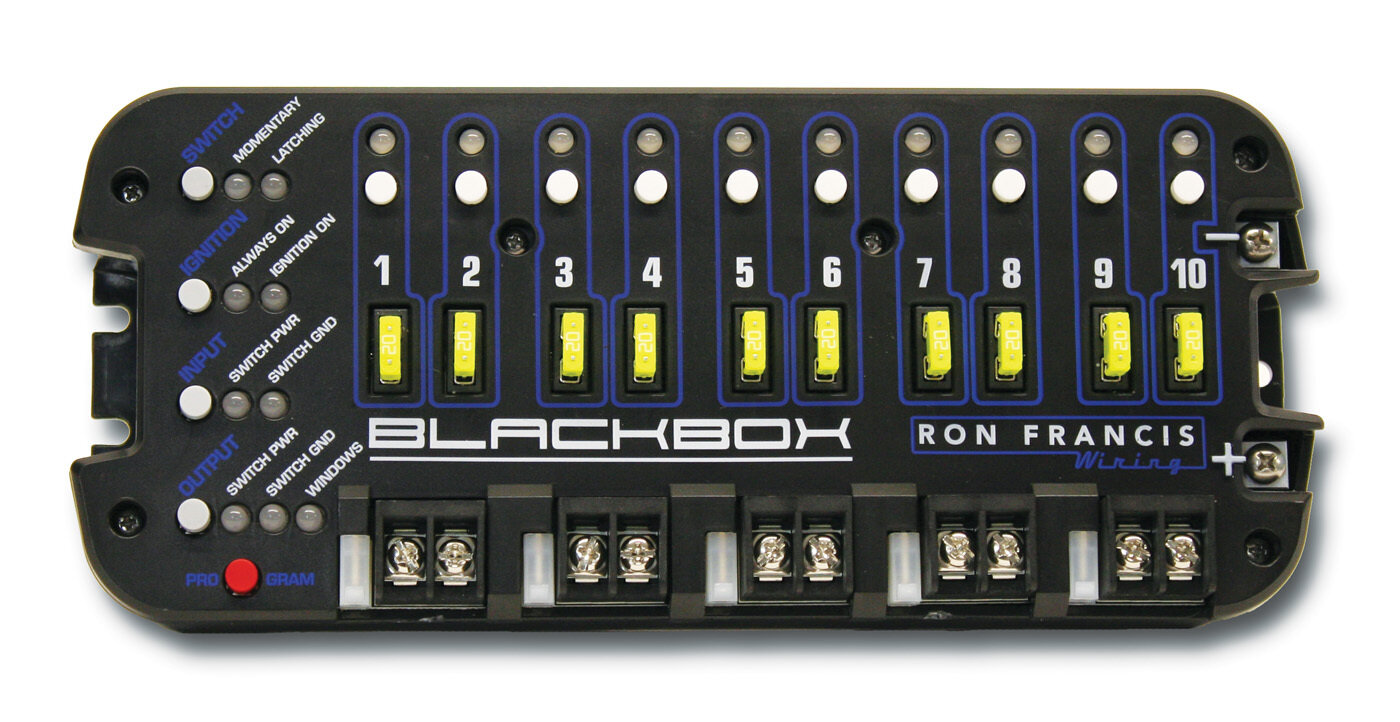
Ron Francis Wiring BlackBox relay system
While a black box is usually thought of as a mysterious device that records data, there’s no mystery to the new BlackBox relay system from Ron Francis Wiring. Winner of the New Street Rod Product of the Year award at the SEMA Show, this unit works equally well on all sorts of project cars. Used for controlling power windows, door locks, fuel and water pumps, and fans, this fully programmable apparatus controls 10 individual relayed circuits and costs $299.95.
With 20 amps to spare per stackable circuit, the BlackBox can handle its fair share of demands across multiple electronic systems in your ride. In addition to allowing you to decide how power is distributed in your vehicle, it’s capable of positive or ground triggering, and reverse polarity. The BlackBox is even capable of stacking the relays to handle large loads, such as for large cooling fans. All from a simple, intuitive button-selection interface. In addition, a Bluetooth module to allow remote control and programming is available for both iPhone and Android applications.
Four quick electrical tips from Ron Francis Wiring
1. Mini-fuses are better than ATO-ATC blade fuses because they have silver contacts that prevent them from adhering to the similar metal used in the fuse box. Introduced in 1992, they are widely available, including at your local grocery store.
2. Do not solder unless you are experienced. If the solder wicks up the wire strands further than the connector itself,
the strand wire becomes solid and can break under vibration. This is why solid-core wire is not used on cars.
3. Always use a crash relay. It will immobilize the electric fuel pump in a collision. Fuel injection systems, carburetors and broken fuel lines can discharge volatile gasoline in seconds, either onto the ground or in the car.
4. Remember, the nomenclature for wire gauges runs in reverse to common logic: the bigger the number, the smaller the wire; the smaller the number, the bigger the wire.

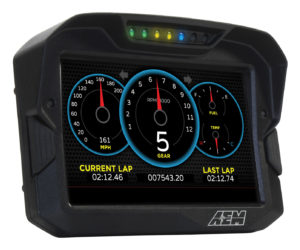
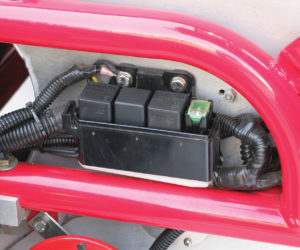
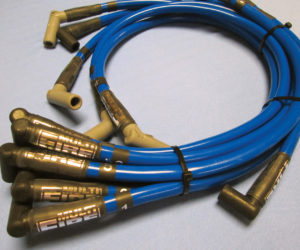
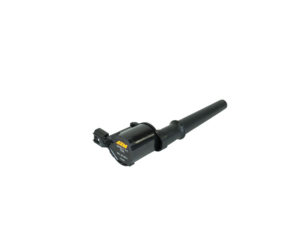
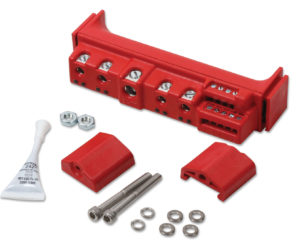
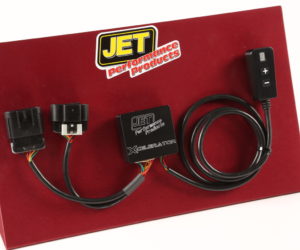




Comments for: Wiring Made Easier
comments powered by Disqus